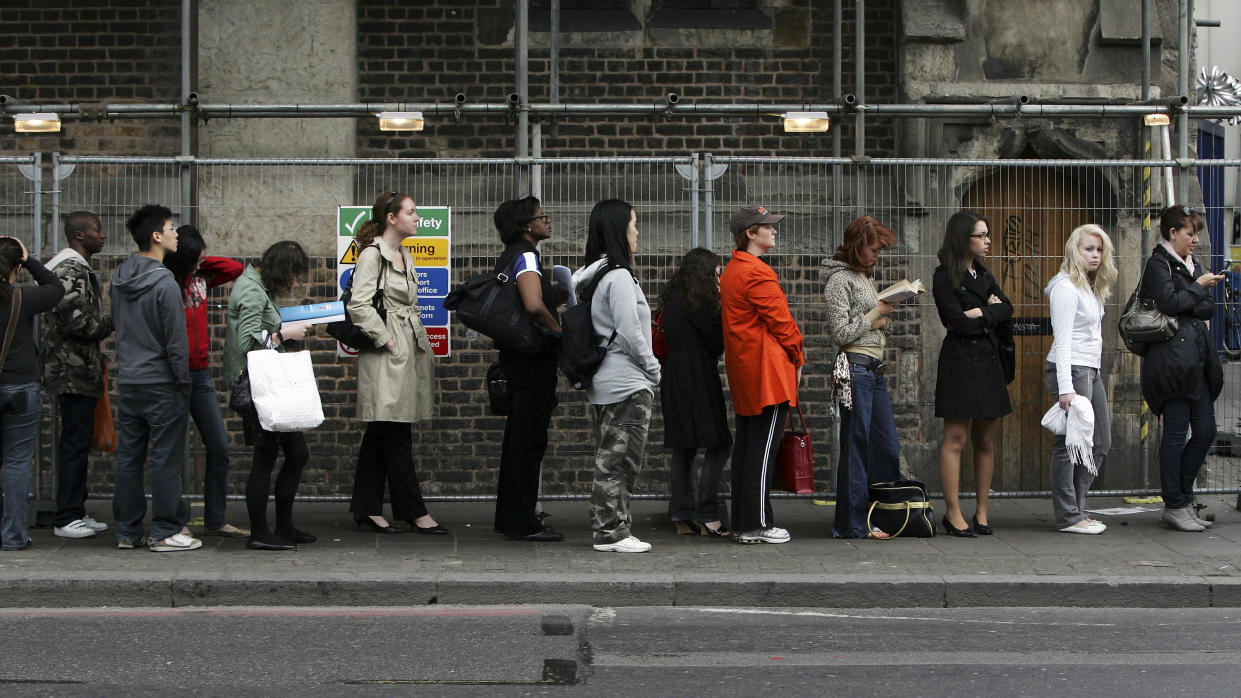Why do simple items like T-shirts have waitlists thousands of people long?

We can totally understand saving up for a good pair of jeans or joining a waitlist for a limited-edition leather bag from a renowned European designer. But all that for a plain white T-shirt? We’re not sold. At least 2,000 people feel differently, however.
Retailer AYR, which stands for All Year Round, is making its first foray into knits and T-shirts, and they’re starting with plain white tees. The supersimple staple looks like your average white tee: short sleeves, loose fit, crew neck. They also have a sleeveless version, and both come in white and black. You can get the same T-shirts from Target, J.Crew, Gap, or Duane Reade. The most notable difference is the price. The cap-sleeved tee, named Supercool, will cost you $65, and the sleeveless Fizz is a slightly more reasonable $55.
We’re not sure how AYR is getting away with charging $65 for a plain shirt — it could be that it’s made of 100 percent Peruvian cotton — but their fans don’t seem to mind. Although they announced the new line on Feb. 20, it didn’t go on sale until today, online and at AYR’s Los Angeles pop-up shop. That didn’t stop customers from staking their claim early, though, by joining a waitlist for the tops that the company set up on its website.
According to the Daily Mail, the waitlist accrued more than 250 entries in its first hour. And Well+Good reported that the waitlist grew to 2,000 that same day.
Thanks to that early interest, Supercool is now sold out in sizes small and medium.
This isn’t the first time that throngs of shoppers have gotten in line just to spent a lot of money on what some would consider a rather unexciting item. In between seasons, Reformation’s basic flared Mid Crop Jean racked up a waitlist 3,000 admirers long. And it’s not because they were insanely innovative or inexpensive — they were a pair of $128 blue jeans that some might say looked like they had gotten shrunk in the wash. French brand Sezane once had a 30,000-person waiting list for a $117 cardigan. Sure, it was designed to be worn backwards as well, but who says you can’t wear your $30 Old Navy cardie backwards?
So why such high demand for high-cost everyday clothing? Market researcher and luxury expert Pamela Danziger, who founded Unity Marketing and Retail Rescue, says it’s all about the cult following. “This is the only way to explain this phenomenon,” she tells Yahoo Lifestyle.
It’s not even remotely about the garment, according to Danziger. “It isn’t the product, but the experience of being in the know about a brand that is cool, hip,” she says. And AYR is definitely “cool,” known for their breezy, effortlessly chic minimalist designs.
“The feeling of being an insider” is what drove 2,000 people to sign up for the waitlist. “The element of discovery is key here too,” she insists, “discovery of something new and different.” People need a little excitement in their lives, and “since people know just what to expect and what they’ll get when they purchase a $5 T-shirt at Kmart,” joining a waitlist for a beloved brand’s first T-shirt is much more appealing. “And then there are the bragging rights that come with being that discoverer,” she continues. “The experience of that discovery is what is so special. The experience, not the T-shirt itself.”
Bob Phibbs, retail expert and CEO of the Retail Doctor, agrees. “It could be as simple as wanting those bragging rights.” But he also points out that just because hundreds or thousands of people join a waiting list doesn’t mean they’re buying anything. “Keep in mind that we don’t know that these are sales either.”
So, it could just be about being in the know and feeling like an insider in that moment, not so much about owning the shirt.
Read more from Yahoo Lifestyle:
Follow us on Instagram, Facebook, and Twitter for nonstop inspiration delivered fresh to your feed, every day.

